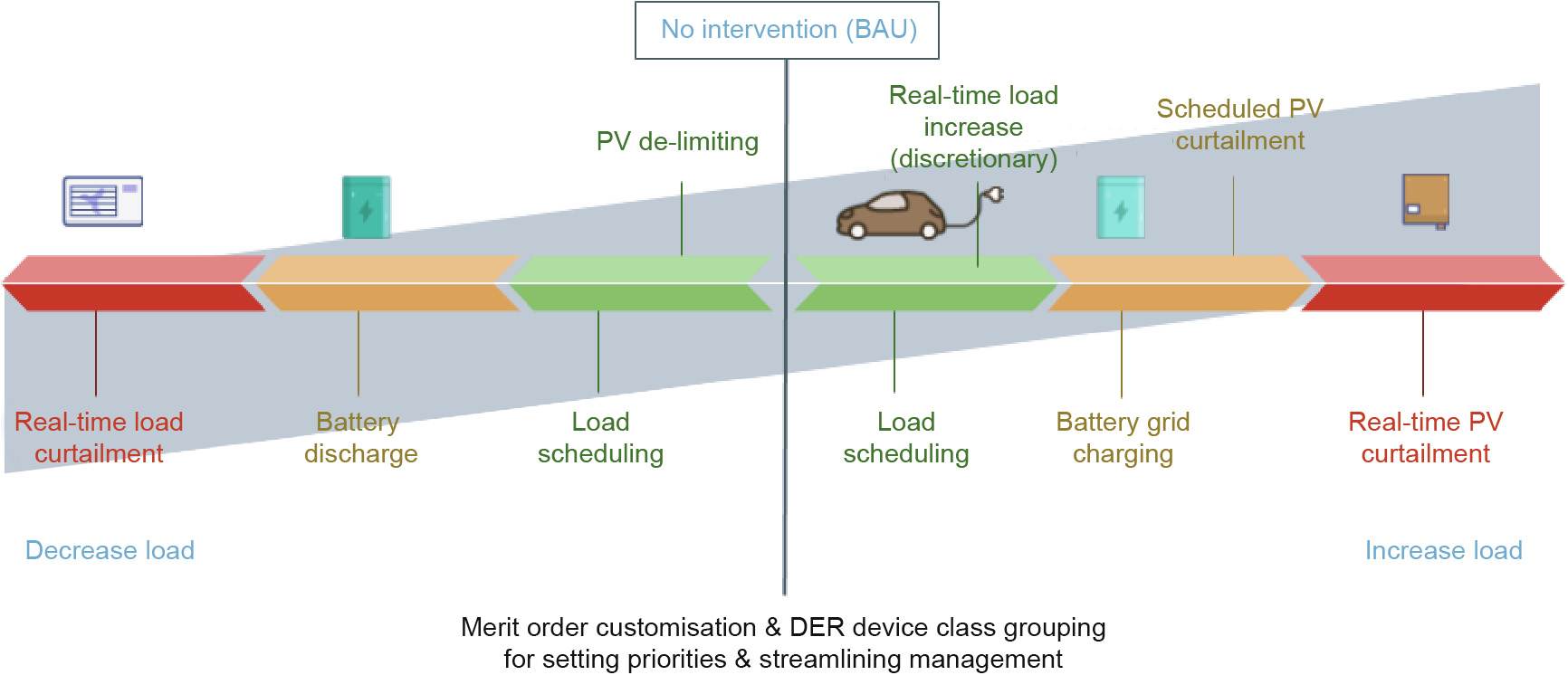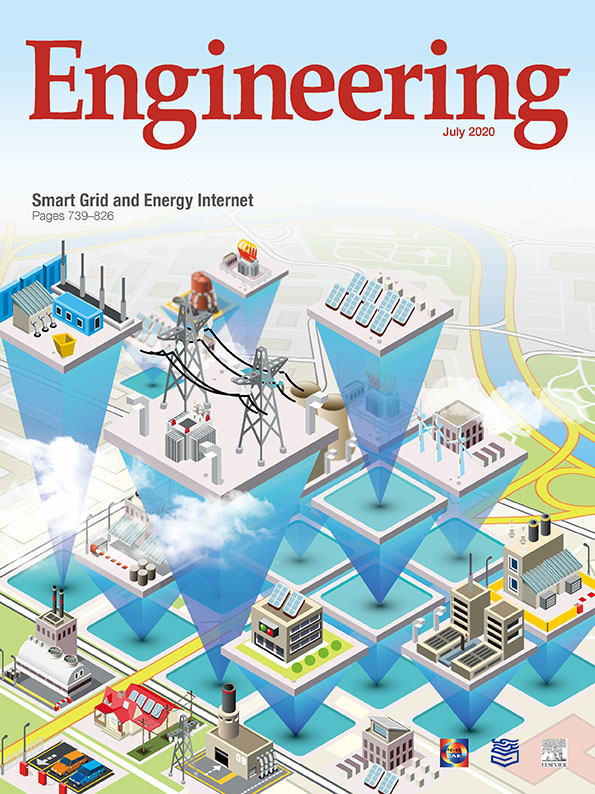《1. Background and context》
1. Background and context
Maximizing the value of distributed energy resources (DERs) on the Australian electricity energy system while also making sure that their widespread uptake does not compromise system stability and reliability is a looming challenge for energy network operators and market operators. In the absence of a national standard for DER connectivity and third-party external control, equipment manufactured for the DER market, such as residential photovoltaic (PV) inverters and battery storage systems cannot provide optimal value to the energy system. The main challenges relate to high penetrations of unmanaged PV systems, which can result in power-quality issues and reverse power flows on local sections of distribution networks; there are also missed opportunities if distributed PV inverter management is considered as a separate issue from load management.
Activity and interest in the DER management space has been accelerating in recent years, with publications such as the Open Energy Networks Required Capabilities and Recommended Actions report by the Energy Networks Association (ENA) and the Australian Energy Market Operator (AEMO) and AEMO’s Integrated System Plan setting the stage for a more comprehensive approach to integrating DER into energy system operation. Several pilot projects are also helping to elucidate how DER management can improve energy system operational efficiency and offer an alternative to conventional infrastructure investment options; these include Horizon Power’s Onslow DER Project and Smart Sun Pilot in Western Australia, the Bruny Island Battery Trial (Consort) in Tasmania, Zepben’s Australian Renewable Energy Agency (ARENA)-backed evolve project, and SA Power Networks' proposed "flexible exports” approach.
Real-time data visibility and device control will be crucial for successful DER integration, especially in areas where PV penetrations begin to rise past the crucial 30%–40% threshold identified by ENA and AEMO in the Open Energy Networks Required Capabilities and Recommended Actions interim report. This is a widely recognized issue, and the Australian Renewable Energy Mapping Infrastructure (AREMI) mapping tool has been developed to assist utilities and technology providers to identify potential PV congestion and other trouble spots on distribution networks where better management of DER may be a more cost-effective investment option than building additional conventional network infrastructure.
Despite this, in Australia to date, utilities’ approach to managing DERs has primarily focussed on limiting the amount of solar PV capacity connected on local network areas via limits on system size or energy export, or—separately—through the remote control of key energy-consuming devices such as water heaters, pool pumps and, in some cases, air conditioning units (e.g., Energy Queensland’s Peak Smart program). Similarly but separately, there are a number of programs and pilots in which batteries are aggregated and managed to support low voltage (LV) network operation or participate in energy markets.
《2. Benefits of a flexible-loads approach to DER management》
2. Benefits of a flexible-loads approach to DER management
In the DER management context, a flexible load consists of a group of at least one energy resource connected to the grid at a shared point that can respond to external control signals (for example, from a DER management system, DERMS) to deliver energy market and/or grid services.
Flexible loads can include:
(1) Inverters for solar photovoltaic systems.
(2) Battery and other energy storage systems.
(3) Remotely controllable energy-consuming devices such as water heaters, pool pumps, and electric vehicle (EV) chargers.
DER assets have varying degrees of flexibility. Battery storage systems, for example, confer a high degree of flexibility and may be charged or discharged in aggregate for both load increases and decreases. For PV systems, the management opportunity lies in generation reduction (load increase); meanwhile, controllable loads can be increased or decreased in real-time (pending and within the bounds of consent from the asset owners).
Fig. 1 below illustrates how different resources types might be dispatched in order of merit to respond to external controls from a DERMS or supervisory control and data acquisition (SCADA) system. Actual merit order may vary depending on the contractual agreements between system operators and DER owners.
In essence, there are several degrees of intervention into DER that contrast with how assets may operate without external control. These degrees are colour-coded in Fig. 1.
《Fig. 1》

Fig. 1. The "flexible load” asset spectrum. BAU: business as usual. Source: SwitchDin.
(1) The interventions in the green band would be expected to have a neutral or beneficial impact for the asset owner. Examples include scheduling of discretionary loads like pool pumps, or PV export de-limiting (e.g. above a default export limit).
(2) Interventions in the orange bands could have an economic impact but not an impact on convenience or comfort. In a future grid with many active prosumers, there would likely be financial compensation for these interventions. Similarly, networks might offer more lucrative and flexible connection agreements to PV or battery system owners who would otherwise be subject to an energy export limit.
(3) The red bands show interventions that could have a more significant financial or comfort-related impact on end users with the least amount of warning. Items in these sections might only be allowed with clear agreement from households and/or in exchange for significant compensation. In most cases, these would be emergency measures where dispatch occurs to maintain grid stability.
《3. In focus: DER management case study in regional Western Australia》
3. In focus: DER management case study in regional Western Australia
Horizon Power and DevelopmentWA’s Smart Sun Pilot in Broome is a unique virtual power plant (VPP) case study that combines both generation and loads as dispatchable resources to pilot a real-time solution to LV network-level challenges. As the utility servicing regional Western Australia, Horizon Power wanted to investigate options to better leverage DERs in network operation. The Smart Sun Pilot deployed a range of DER equipment types across approximately 30 sites in a residential development serviced by a single-pole transformer. Households in the Smart Sun Pilot are managed at the site level as flexible loads.
Australian energy technology company SwitchDin provided onsite device connectivity in the form of Droplet controllers for a range of device types and brands. Droplets act as protocol translators at the site level, connect to SwitchDin’s Stormcloud platform for project-wide orchestration. A Droplet was also fitted onto the transformer to monitor voltage levels and network power flows through the transformer. In conjunction with data from the households, this enables closed-loop control of the local network via SwitchDin’s Stormcloud cloud platform.
The goals of the Smart Sun Pilot were to:
(1) Enable a higher penetration of rooftop solar PV while managing reverse power flows on the distribution transformer.
(2) Reduce peak electricity demand on the distribution transformer.
(3) Enable the connection of more customers to the existing infrastructure, thus reducing residential lot development costs.
Ultimately, Horizon Power was able to demonstrate aggregate control of DERs to manage peak load and prevent reverse power flows on the transformer, as show in Fig. 2 below.
《Fig. 2》

Fig. 2. (a) Example of strategic scheduled reduction of excess solar PV on in a residential area to prevent reverse power flow through the local pole transformer; (b) the impact of the PV curtailment implemented in (a) on local distribution transformer load. Data from Horizon Power/DevelopmentWA Smart Sun Pilot with SwitchDin. Source: SwitchDin.
For Smart Sun, the time intervals for resource dispatch are 5 min, which is the current trading interval and soon-to-be settlement interval for wholesale electricity on the National Electricity Market (NEM). This means that the learnings from the project have implications for the management of DERs both on LV networks and in wholesale electricity market trading.
Importantly, the Smart Sun Pilot provided Horizon Power detailed management customization functionality, along with customisable merit order, device groupings and policies for device use cycling and dispatch duration.
《4. Looking forward》
4. Looking forward
The opportunities for active, utility-driven DER management extend beyond battery charging and discharging. Optimizing the energy system of tomorrow will involve visibility and control of a range of DER assets operating at the site level and across the LV network and energy market levels. Managing DERs as diverse, flexible loads will expand the opportunities for system operators and system owners alike.













 京公网安备 11010502051620号
京公网安备 11010502051620号




